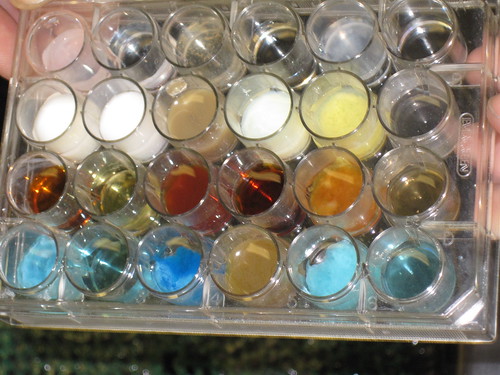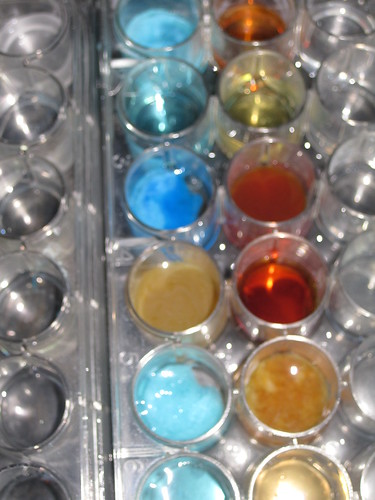Our group first put a dropper-full of each sodium _____ in each respective row, and then added the various nitrates. The finished tray looked something along the lines of this: 

The combinations found to form precipitates for our group are as follows:
Sodium Carbonate + Aluminum Nitrate
Sodium Phosphate + Aluminum Nitrate
Sodium Phosphate + Barium Nitrate
Sodium Sulfate + Barium Nitrate
Sodium Carbonate + Copper(II)Nitrate
Sodium Hydroxide + Copper(II)Nitrate
Sodium Iodide + Copper(II)Nitrate
Sodium Phosphate + Copper(II)Nitrate
Sodium Carbonate + Iron(III)Nitrate
Sodium Hydroxide + Iron(III)Nitrate
Sodium Phosphate + Iron(III)Nitrate
Sodium Carbonate + Silver Nitrate
Sodium Chloride + Silver Nitrate
Sodium Hydroxide + Silver Nitrate
Sodium Iodide + Silver Nitrate
Sodium Phosphate + Silver Nitrate
Sodium Carbonate + Zinc Nitrate
Sodium Phosphate + ZInc Nitrate

Here is an example for one part of numbers 1 and 2 in the post-lab:
Molecular Equation: 3Na2CO3 +2Al(NO3)3 --> Al2(CO3)3+6NaNO3
Net Ionic Equation: 2Al^3+ +3 CO^3- -->Al2(CO3)3
You can tell which one is the solid based on the fact that sodium and nitrate salts are soluble in water...(the one that isn't NaNO3).
Homework for tonight:
The lab is due Friday
as are all the worksheets and book problems because...
the test is friday. Yay!
The only matter left to be settled is who will have the challenge of following this excellent scribe post. I believe his name starts with B and ends with -obby S.
Bobby S
No comments:
Post a Comment